10 X 90 ML LIVE WHITE MOSQUITO LARVAE (900Ml) PERFECT FISH FOOD, Enhance Your Betta Fish Diet with Live Mosquito Larvae for Optimal Health and Vibrant Colors, Boost Fish Growth and Color with Live Larvae
£20.49 Original price was: £20.49.£17.42Current price is: £17.42.
Welcome these beautiful creatures into your aquarium with our 10 X 90 ML LIVE WHITE MOSQUITO LARVAE. This premium fish food enhances your Betta fish diet, promoting vibrant colors and optimal health. Perfect for aquarists dedicated to nurturing flourishing aquatic companions.
1001 in stock
10 X 90 ML Live White Mosquito Larvae (900Ml)
Species Introduction
Welcome these beautiful creatures into your aquarium with the 10 X 90 ML Live White Mosquito Larvae, a premium fish food designed to enhance the diet of Betta fish (scientific name: Betta splendens). Originating from Southeast Asia, Betta fish thrive in freshwater environments, often found in shallow waters, rice paddies, and marshes. These aquatic companions are known for their vibrant colors and unique personalities, making them a popular choice among aquarium enthusiasts. The live mosquito larvae serve as a natural food source that not only supports their dietary needs but also promotes optimal health and enhances their coloration. By providing a diet rich in live foods, you can ensure that your Betta fish remain active, healthy, and visually stunning.
Care Requirements Dashboard
Essential Care Guide
| Optimal Living Conditions | |
|---|---|
| Water Temperature | 24-27°C (75-81°F) |
| pH Level | 6.5-7.5 |
| Water Hardness | 4-12 dKH |
| Minimum Tank Size | 80L (20 gal) |
| Salinity | Freshwater |
| Care Level | Beginner Friendly |
Natural Behavior & Temperament
Betta fish are known for their vibrant personalities and unique behaviors. They exhibit a range of swimming patterns, often darting around the tank with bursts of energy. Their natural behavior includes exploring their environment, interacting with tank mates, and displaying territorial instincts, especially among males. Bettas are generally social fish but can be aggressive towards other males, making it essential to choose compatible tank mates carefully. Providing a well-structured environment with hiding spots and open swimming areas will help reduce stress and allow these beautiful creatures to express their natural behaviors. Observing your Betta’s interactions can be a rewarding experience, as they often display curiosity and intelligence, making them engaging aquatic companions.
Tank Setup Guide
Setting up a tank for your Betta fish involves creating an environment that mimics their natural habitat. Start with a tank size of at least 5 gallons, as smaller tanks can lead to rapid fluctuations in water parameters, which can stress your fish. Use a fine substrate, such as sand or small gravel, to replicate the soft bottoms of their natural environment. Incorporate live plants, such as Java fern or Anubias, which provide hiding spots and contribute to water quality. Additionally, consider adding decorations like caves or driftwood to create territories and reduce aggression. Ensure that the tank is equipped with a gentle filter to maintain water quality without creating strong currents, as Betta fish prefer calm waters. Finally, use a heater to maintain the optimal temperature range, ensuring your Betta fish remain comfortable and healthy.
Water Quality Management
Maintaining water quality is crucial for the health of your Betta fish. Regular water changes, ideally 25% to 50% weekly, will help keep the water clean and free from harmful toxins. Monitor the pH level regularly, aiming for a stable range of 6.5 to 7.5. It’s also important to check the water temperature daily, ensuring it stays within the ideal range of 76°F to 82°F (24°C to 28°C). Invest in a reliable water testing kit to monitor ammonia, nitrite, and nitrate levels, as high levels of these compounds can be detrimental to your fish’s health. Additionally, using a quality water conditioner will help remove chlorine and chloramines from tap water, making it safe for your aquatic companions. By prioritizing water quality management, you can create a thriving environment for your Betta fish.
Feeding & Nutrition
Feeding your Betta fish a balanced diet is essential for their health and vibrancy. The 10 X 90 ML Live White Mosquito Larvae is an excellent addition to their diet, providing high protein content that supports growth and enhances coloration. Bettas are carnivorous and thrive on a diet that includes live foods, which mimic their natural feeding habits. A recommended feeding schedule includes offering mosquito larvae 2-3 times a week, alongside high-quality pellets or flakes specifically formulated for Betta fish. Ensure that the portion sizes are appropriate, as overfeeding can lead to health issues. Monitor your fish’s behavior during feeding times; they should eagerly accept food and display active hunting behaviors. By providing a varied diet, including live foods like mosquito larvae, you can ensure that your Betta fish remain healthy, vibrant, and full of life.
Compatibility Guide
When considering tank mates for your Betta fish, it is essential to choose compatible species that will coexist peacefully. Bettas can be territorial, especially males, so it is advisable to house them alone or with carefully selected companions. Suitable tank mates include peaceful species such as Corydoras catfish, neon tetras, and certain types of snails. Avoid housing multiple male Bettas together, as this can lead to aggressive behavior and stress. Additionally, be cautious with fin-nipping species like tiger barbs, as they may irritate your Betta. When introducing new tank mates, ensure that the tank is adequately sized and that hiding spots are available to reduce stress and territorial disputes. By understanding the social dynamics of your Betta fish, you can create a harmonious community tank.
Health & Wellness
Maintaining the health and wellness of your Betta fish is paramount to their longevity and vibrancy. Regular observation is key; look for signs of stress, such as lethargy, faded colors, or abnormal swimming patterns. Common health issues in Betta fish include fin rot, ich, and swim bladder disease. To prevent these problems, ensure that water quality is consistently monitored and maintained. Providing a balanced diet, including live foods like mosquito larvae, will also support their immune system. In case of illness, prompt action is crucial; consult with an aquatic veterinarian or conduct research to determine appropriate treatments. By prioritizing health and wellness, you can create a thriving environment for your Betta fish, allowing them to flourish and display their natural beauty.
Breeding Information
Breeding Betta fish can be a rewarding experience, but it requires careful planning and preparation. To initiate breeding, select a healthy male and female Betta, ensuring they are of appropriate age (around 4-6 months). Create a breeding tank with a gentle filter and plenty of hiding spots. The male will build a bubble nest at the water’s surface, signaling readiness to mate. Once the female is introduced, observe their interactions closely; the male will display courtship behaviors, and if successful, the female will lay eggs in the bubble nest. After spawning, it is essential to separate the male from the female to prevent aggression. The fry will hatch within 24-36 hours and require specialized care, including infusoria or finely crushed flakes for feeding. By understanding the breeding process, you can successfully raise Betta fry and contribute to the continuation of this beautiful species.
Acclimation Process
Acclimating your Betta fish to a new tank is a crucial step in ensuring their health and reducing stress. Begin by floating the sealed bag containing the fish in the tank for about 15-20 minutes; this allows the temperature to equalize. Afterward, gradually introduce small amounts of tank water into the bag every 5 minutes, allowing the fish to adjust to the new water parameters. This process should take approximately 1-2 hours. Once acclimated, gently release the Betta into the tank, avoiding any old water from the bag. Providing a calm environment during this transition is essential; turn off any strong filtration or lighting to minimize stress. By following these acclimation steps, you can ensure a smooth transition for your Betta fish into their new home.
Long-term Care
Long-term care of your Betta fish involves ongoing attention to their environment, diet, and health. Bettas can live for 3-5 years with proper care, so establishing a routine is essential. Regular water changes, consistent feeding schedules, and monitoring of water parameters should be part of your daily or weekly tasks. Additionally, keep an eye on their behavior; any changes may indicate health issues that require immediate attention. Providing enrichment through plants, decorations, and varied diets will help keep your Betta mentally stimulated and physically active. As your Betta ages, you may need to adjust their diet or tank setup to accommodate their changing needs. By committing to long-term care, you can enjoy a thriving Betta fish that brings beauty and joy to your aquarium.
Natural Habitat Recreation
Recreating the natural habitat of Betta fish in your aquarium can enhance their well-being and encourage natural behaviors. In their native environments, Bettas inhabit shallow waters rich in vegetation and organic debris. To mimic this habitat, consider incorporating live plants such as floating ferns or broad-leaved plants that provide cover and hiding spots. Utilizing driftwood and rocks can also create natural structures for your Betta to explore. Aim to maintain a calm water flow, as Bettas prefer still waters. Additionally, using a dark substrate can help highlight their vibrant colors, making their natural beauty stand out. By focusing on natural habitat recreation, you can create a comfortable and stimulating environment for your Betta fish.
Seasonal Care Adjustments
Seasonal changes can impact the care requirements of your Betta fish, particularly concerning water temperature and lighting. During warmer months, ensure that the water temperature remains stable, as higher ambient temperatures can lead to overheating. Conversely, in cooler months, consider using a heater to maintain the ideal temperature range of 76°F to 82°F (24°C to 28°C). Additionally, adjusting the lighting schedule can help simulate natural day and night cycles; aim for 10-12 hours of light per day to support your Betta’s circadian rhythm. Regularly monitor water quality, as seasonal changes can affect the tank’s ecosystem. By making these seasonal care adjustments, you can ensure that your Betta fish remain comfortable and healthy throughout the year.
Expert Tips
To provide the best care for your Betta fish, consider these expert tips. First, invest in a quality water testing kit to monitor ammonia, nitrite, nitrate, pH, and hardness levels regularly. This proactive approach will help you address any issues before they become serious. Additionally, consider rotating different types of food, including high-quality pellets, flakes, and live foods like mosquito larvae, to ensure a balanced diet. Observe your Betta’s behavior closely; any signs of stress or illness should be addressed promptly. Finally, create a peaceful environment by avoiding aggressive tank mates and providing ample hiding spots. By following these expert tips, you can foster a thriving aquarium that showcases the natural beauty and personality of your Betta fish.
Troubleshooting
Encountering issues with your Betta fish can be concerning, but many problems have straightforward solutions. Common issues include fin rot, which can be caused by poor water quality or injuries. To address this, ensure that water parameters are optimal and consider adding aquarium salt to aid healing. If your Betta is exhibiting signs of stress, such as hiding or refusing to eat, check for compatibility issues with tank mates or environmental stressors. Additionally, if your Betta displays signs of swim bladder disease, such as floating or sinking, consider adjusting their diet and feeding schedule. By being observant and proactive, you can troubleshoot common problems effectively and maintain a healthy environment for your Betta fish.
Scientific Background
The Betta fish, scientifically known as Betta splendens, belongs to the Osphronemidae family. They are native to the freshwater environments of Southeast Asia, particularly in Thailand, Cambodia, and Vietnam. Bettas have become popular in the aquarium trade due to their striking colors and unique behaviors. Research has shown that these fish possess a labyrinth organ, allowing them to breathe atmospheric oxygen, which is crucial for their survival in low-oxygen environments. Conservation efforts are underway to protect their natural habitats, as pollution and habitat destruction pose significant threats to their populations. Understanding the scientific background of Betta fish can deepen your appreciation for these remarkable creatures and inform your care practices.
Advanced Care Techniques
For those looking to elevate their Betta fish care to the next level, consider implementing advanced techniques that promote health and well-being. One such technique is the use of a quarantine tank for new arrivals; this allows you to monitor for diseases before introducing them to your main tank. Additionally, consider using a varied diet that includes live foods, frozen foods, and high-quality pellets to ensure optimal nutrition. Implementing a regular maintenance schedule that includes water changes, substrate vacuuming, and filter cleaning will help maintain a stable environment. Finally, engaging in regular observation and behavior analysis can help you identify any changes that may indicate health issues. By adopting these advanced care techniques, you can provide the highest standard of care for your Betta fish.
Frequently Asked Questions
Q: What tank size is required for Betta fish?
Betta fish thrive in a minimum tank size of 20 litres. This provides ample swimming space and helps maintain water quality. Smaller tanks can lead to stress and health issues due to rapid temperature fluctuations and waste accumulation. A larger tank also allows for better filtration and aeration, which are vital for Betta health. Additionally, ensure the tank is equipped with a heater to maintain a consistent temperature between 24-28°C, as Betta fish prefer warm waters. Providing hiding spots and plants can also reduce stress, making them feel secure in their environment.
✓ Expert Tip
Consider using a sponge filter to avoid strong currents that can stress Betta fish.
Q: How often should I feed Betta fish live mosquito larvae?
Betta fish should be fed live mosquito larvae 2-3 times a week as part of a varied diet. This frequency ensures they receive essential nutrients while preventing overfeeding, which can lead to digestive issues. Each feeding session should consist of a small amount, roughly the size of their eye, to avoid waste and maintain water quality. Incorporating other food types, such as high-quality pellets or frozen foods, will provide a well-rounded diet and enhance their colouration and health. Always monitor their behaviour and adjust feeding amounts based on their appetite.
✓ Expert Tip
Introduce new foods gradually to prevent digestive upset.
Q: What are the signs of healthy Betta fish?
Healthy Betta fish display vibrant colours, clear eyes, and a responsive demeanour. They should swim actively and explore their environment without signs of lethargy. Look for smooth fins without tears or fraying, as damaged fins may indicate stress or illness. Additionally, observe their appetite; a healthy Betta will eagerly consume food during feeding times. Regular water changes and maintaining optimal water parameters also contribute to their overall health. If you notice any changes in behaviour, such as hiding excessively or a lack of interest in food, it may indicate underlying health issues that require attention.
✓ Expert Tip
Regularly check water parameters to ensure a healthy environment.
Q: How do I acclimatise Betta fish to a new aquarium?
Acclimatising Betta fish to a new aquarium is vital for their health. Start by floating the sealed bag containing the fish in the tank for about 15-20 minutes. This allows the water temperatures to equalise. Afterward, gradually introduce tank water into the bag in small increments over the next 30-60 minutes. This step helps the fish adjust to differences in water chemistry. Once acclimatised, gently release the Betta into the tank using a net, avoiding adding bag water to your aquarium. This process minimises stress and helps prevent shock, ensuring a smoother transition.
✓ Expert Tip
Acclimatisation is crucial; never rush the process to avoid stress.
Q: What temperature should I maintain for Betta fish?
Betta fish thrive in warm water, ideally between 24-28°C. Maintaining this temperature range is essential for their metabolism and overall health. Sudden fluctuations can lead to stress and susceptibility to diseases. Using a reliable aquarium heater is recommended to ensure consistent warmth. Regularly monitor the water temperature with a thermometer to avoid extremes. In colder months, consider insulating the tank to maintain warmth. Remember that Betta fish are tropical species; thus, colder temperatures can adversely affect their behaviour and immune system.
✓ Expert Tip
Invest in a heater with an adjustable thermostat for optimal temperature control.
Q: What are the best tank mates for Betta fish?
When selecting tank mates for Betta fish, it is crucial to choose peaceful species that won’t provoke aggression. Suitable companions include certain types of snails, shrimp, and non-aggressive fish like Corydoras or small Tetras. Avoid keeping them with fin-nipping species or other male Bettas, as this can lead to stress and territorial disputes. Always observe interactions closely after introducing new tank mates, and be prepared to separate them if aggression occurs. A well-planned community tank can enhance the Betta’s environment and reduce stress levels.
✓ Expert Tip
Introduce new tank mates gradually to minimise stress.
Q: How can I prevent common diseases in Betta fish?
Preventing diseases in Betta fish involves maintaining optimal water quality and a stress-free environment. Regular water changes, ideally 25-50% weekly, help reduce toxins and maintain health. Monitor water parameters, including pH, ammonia, and nitrate levels, to ensure they remain stable. Providing a balanced diet rich in nutrients also boosts their immune system. Quarantine new fish before introducing them to the main tank to prevent disease transmission. Lastly, keep the tank clean and remove uneaten food promptly to reduce the risk of bacterial infections.
✓ Expert Tip
Invest in a quality water testing kit for regular monitoring.
Q: How does live mosquito larvae enhance Betta fish colouration?
Live mosquito larvae are an excellent source of protein and essential fatty acids, which play a significant role in enhancing Betta fish colouration. The natural fats and nutrients found in live foods help promote vibrant colours and healthy scales. Regularly incorporating live mosquito larvae into their diet stimulates their natural colouration and can lead to a more striking appearance. Additionally, the movement of live food encourages natural hunting behaviours, providing mental stimulation and exercise, which is beneficial for overall health.
✓ Expert Tip
Rotate live foods with high-quality pellets for optimal nutrition.
Q: Can I mix live mosquito larvae with other food types?
Yes, mixing live mosquito larvae with other food types is beneficial for Betta fish. A varied diet ensures they receive a broad spectrum of nutrients necessary for optimal health. You can combine live larvae with high-quality pellets, frozen foods, or even plant-based options. This approach helps prevent dietary deficiencies and supports their growth and colouration. However, avoid mixing food types during a single feeding session if your Betta is not accustomed to it, as sudden changes may cause digestive issues.
✓ Expert Tip
Introduce new food gradually to help your Betta adjust.
Q: What is the shelf life of live mosquito larvae?
Live mosquito larvae should be used as soon as possible after purchase to ensure maximum freshness and nutritional value. Generally, they can last up to 48 hours in a cool, dark place. To extend their lifespan, store them in a small container with breathable material and ensure they are kept moist but not submerged in water. Avoid exposing them to direct sunlight or extreme temperatures. If you cannot use them within this time frame, consider freezing portions for later use, as this preserves their nutritional benefits.
✓ Expert Tip
Always check for signs of spoilage before feeding to your Betta.
Q: Will live mosquito larvae affect my water quality?
Feeding live mosquito larvae can impact water quality if not managed properly. Leftover food can decompose, leading to increased ammonia and nitrate levels, which are harmful to your Betta fish. To maintain water quality, feed only what your Betta can consume within a few minutes and promptly remove any uneaten larvae. Regular water testing and maintenance practices, such as partial water changes, will help keep the tank environment healthy. Monitoring your Betta’s feeding habits can also assist in determining the appropriate feeding amount.
✓ Expert Tip
Maintain a feeding schedule to avoid overfeeding and water quality issues.
Q: How does live mosquito larvae support fish health and growth?
Live mosquito larvae are rich in protein and essential fatty acids, crucial for supporting the growth and overall health of Betta fish. These nutrients aid in muscle development, enhance immune function, and promote vibrant colouration. Additionally, live foods stimulate natural hunting instincts and provide mental stimulation, contributing to a more active and engaged fish. Regularly incorporating live mosquito larvae into their diet, alongside high-quality dry foods, ensures a balanced nutritional profile that supports optimal growth and health.
✓ Expert Tip
Combine live foods with a variety of high-quality pellets for a balanced diet.

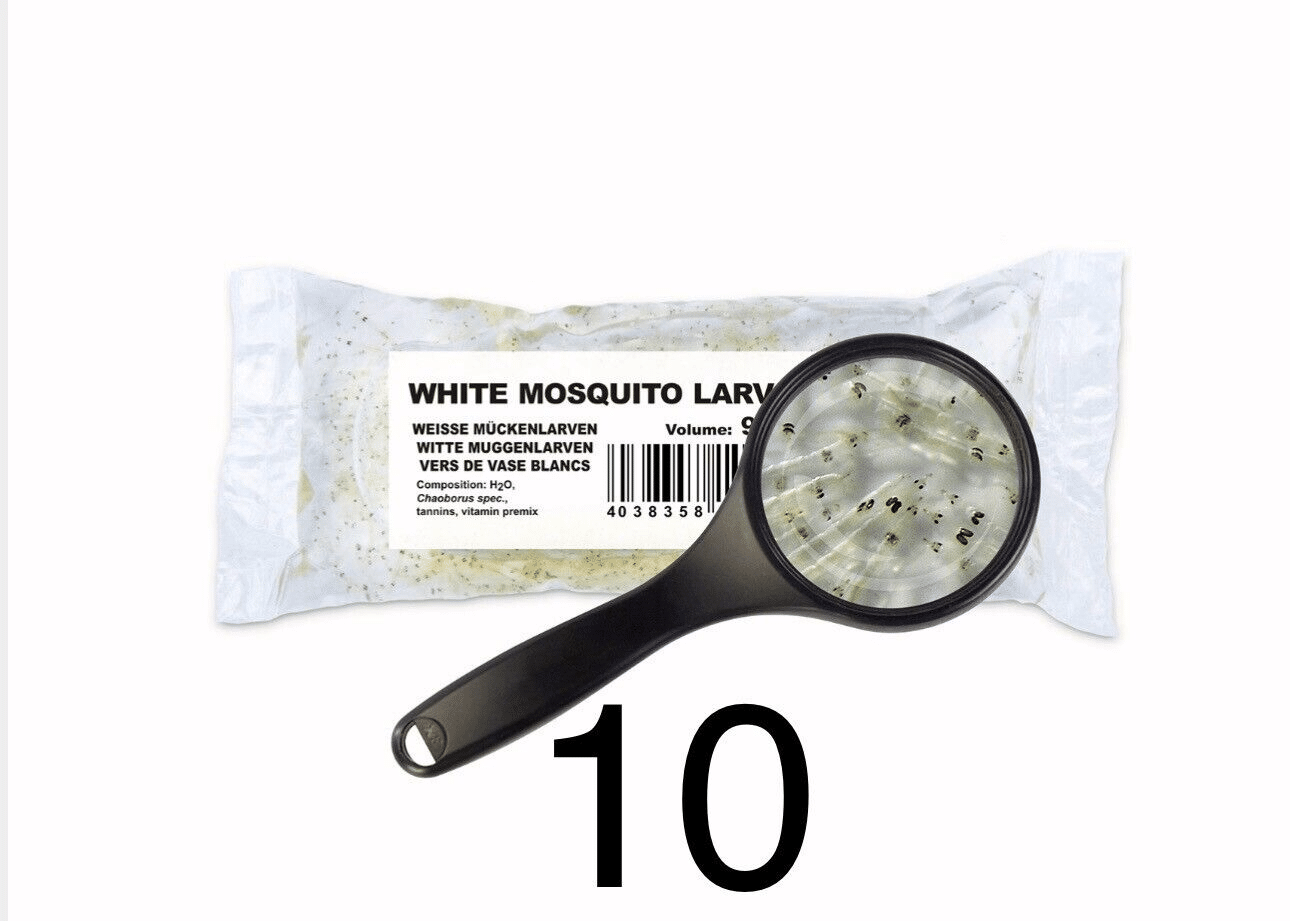



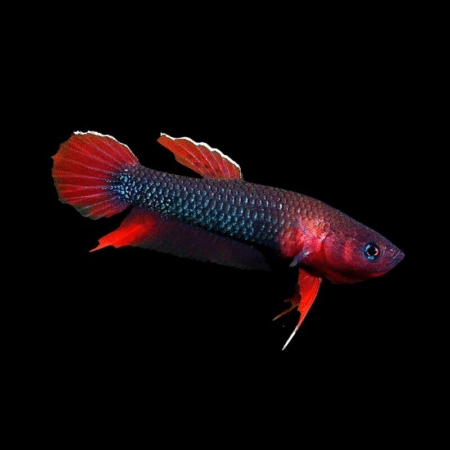
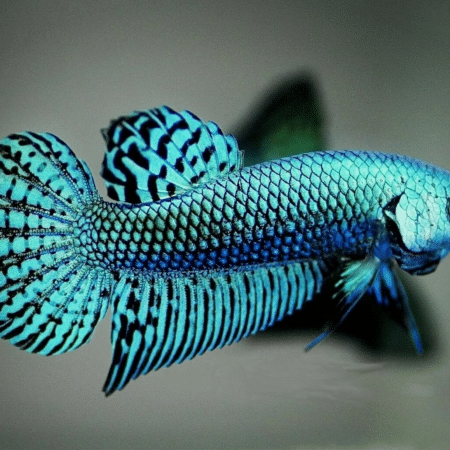
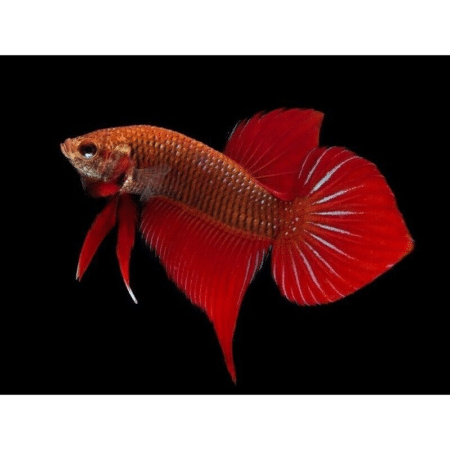

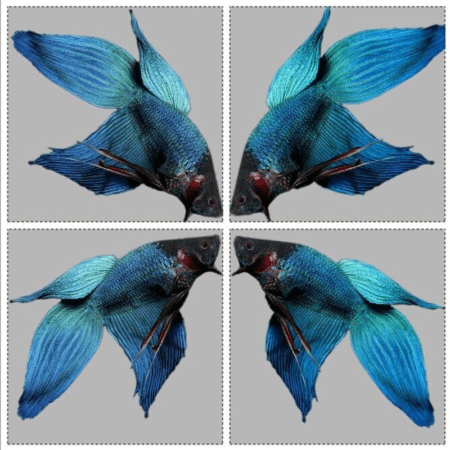

Emily Carter (verified owner) –
I’ve been keeping fish for over five years, and I can honestly say that these live white mosquito larvae are a game-changer for my betta fish. After using them for about two weeks, I noticed my betta, named Finn, was more energetic and vibrant than ever! He goes absolutely wild for them, and it has significantly improved his overall health and happiness.
These larvae are packed with nutrients, making them an excellent choice for a balanced fish diet. I initially tried freeze-dried alternatives, but they just didn’t have the same appeal for Finn. The convenience of the 90 ML packs means they stay fresh longer, and I love that they’re easy to store in my fridge.
If you’re a caring fish parent like me, I highly recommend this product, especially for any betta enthusiasts. Just a quick tip: I like to soak the larvae in tank water for a few minutes before feeding to ensure they’re at the right temperature. Overall, I’ll definitely be purchasing these again!
Emily Carter (verified owner) –
As a dedicated fish parent, I always strive to provide the best nutrition for my Betta fish, and the 10 X 90 ML Live White Mosquito Larvae have truly exceeded my expectations! After just a week of incorporating these live larvae into their diet, I noticed a significant boost in my Betta’s energy levels and overall vibrancy. The colors have become more vivid, and they seem more active during feeding time, eagerly chasing and devouring these little treats.
I’ve tried other freeze-dried alternatives, but nothing compares to the excitement and nutritional value of live food. Plus, I appreciate that these larvae are harvested responsibly, ensuring fish welfare is a priority.
The packaging was user-friendly, allowing me to easily portion out the right amount for my fish. My only minor concern is that they need to be kept cool to maintain freshness, but that’s easily manageable. For any fellow Betta lovers or aquarists looking to enhance fish nutrition, I wholeheartedly recommend these live mosquito larvae. They are perfect for keeping your fish healthy and happy!